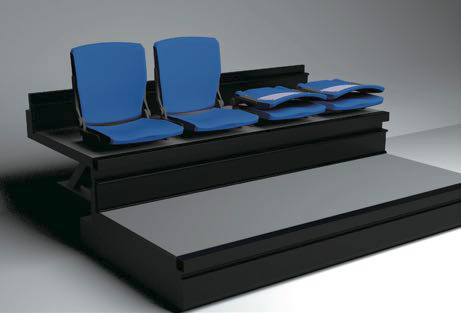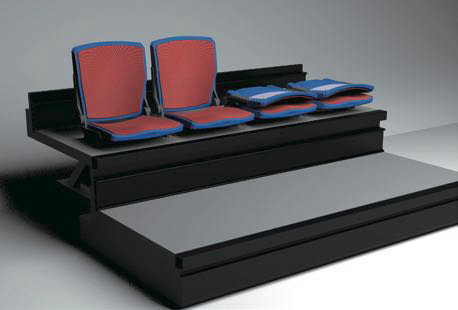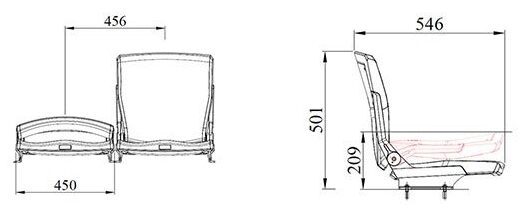Design Considerations for Telescopic Seating: Enhancing Safety and Spectator Experience
Designing telescopic seating systems requires careful consideration of various factors to ensure optimal safety, functionality, and spectator experience. Preferred Seating’s experts can provide valuable insights into the important engineering considerations for retractable platforms. It covers key aspects such as safety regulations, seating capacity, sightlines, accessibility, material choices, and integration with the overall venue theme.
Safety Regulations and Standards
Safety should be a top priority when developing telescopic seating systems. Complying using local building codes, requirements, and industry practices is essential. Designers must ensure that the system meets structural requirements, fire safety codes, and load-bearing capacities. Adequate safety features, such as handrails, guardrails, and non-slip surfaces, should be incorporated to prevent accidents and ensure the well-being of spectators.
Preferred Seating offers layout, design and installation
Determining the seating capacity and configuration is a critical consideration in retractable platform engineering. The plan should accommodate the anticipated number of spectators while adhering to safety regulations. Factors such as seat spacing, row depth, and aisles should be carefully determined to maximize comfort and allow for smooth movement of spectators during ingress and egress.
Sightlines and Visibility
Optimal sightlines are vital for an enhanced spectator experience. The design should prioritize unobstructed views from all retractable platform seating positions, ensuring that spectators have clear sightlines to the primary key factors, such as the sport field, stage, or performance area. Considerations should be made to minimize obstructions, such as structural elements, support columns, or equipment, that may hinder sightlines.
Ensuring accessibility for all individuals, including those with disabilities, is crucial in modern venue design
Telescopic seating systems should be built to comply with accessibility guidelines, providing inclusive seating options, such as wheelchair-accessible areas and companion seating. Clear pathways, ramps, and elevators should be integrated to enable easy access and movement for individuals with mobility challenges.
The selection of materials plays a significant role in the design and functionality of retractable platforms
The chosen materials should meet safety standards, provide durability, and be resistant to wear and tear. Considerations should also be given to factors such as ease of maintenance, cleaning, and resistance to environmental elements like moisture and UV exposure.
Telescopic seating systems should seamlessly integrate with the overall theme of the venue
The aesthetic elements, finishes, and colors should align with the venue’s architectural style and branding. Integration with lighting, audio, and visual systems should also be considered to enhance the overall experience and create a cohesive design that complements the venue’s identity.
Designing telescopic seating systems with flexibility in mind allows for adaptability to different event configurations and requirements
The system should enable easy retraction and extension of rows, quick conversion between seating and open spaces, and the incorporation of modular components for easy customization. Flexibility enhances the versatility of the venue and accommodates various event types.
Designing telescopic seating systems requires meticulous attention to various factors to ensure safety, functionality, and an exceptional spectator experience. Considerations such as safety regulations, seating capacity, sightlines, accessibility, material choices, and integration with the overall venue decor are critical in achieving these goals. Guided by Preferred Seating’s experts you can carefully address these design considerations. Your venue can create retractable platforms that prioritize safety, optimize spectator comfort, and seamlessly blend with the venue’s architectural vision, ultimately enhancing the overall success of the venue and its events.





